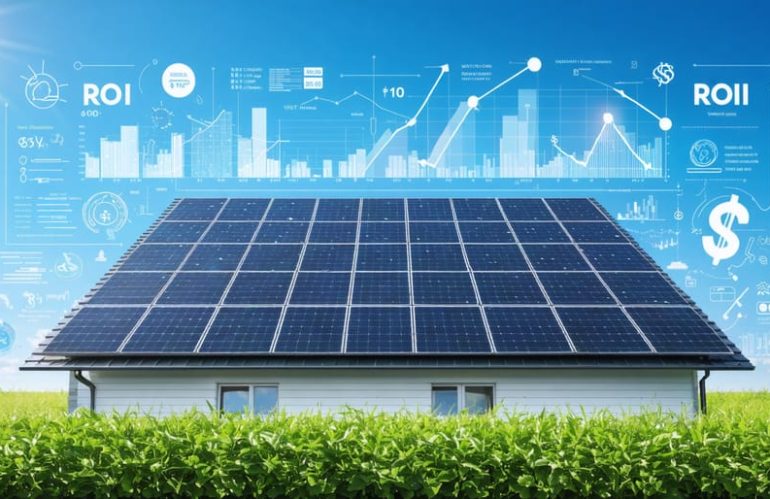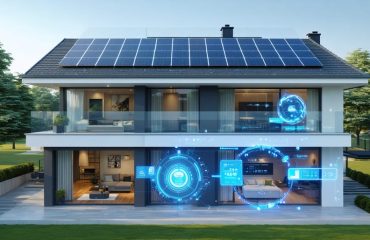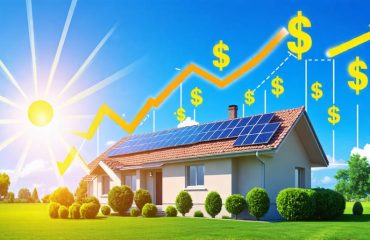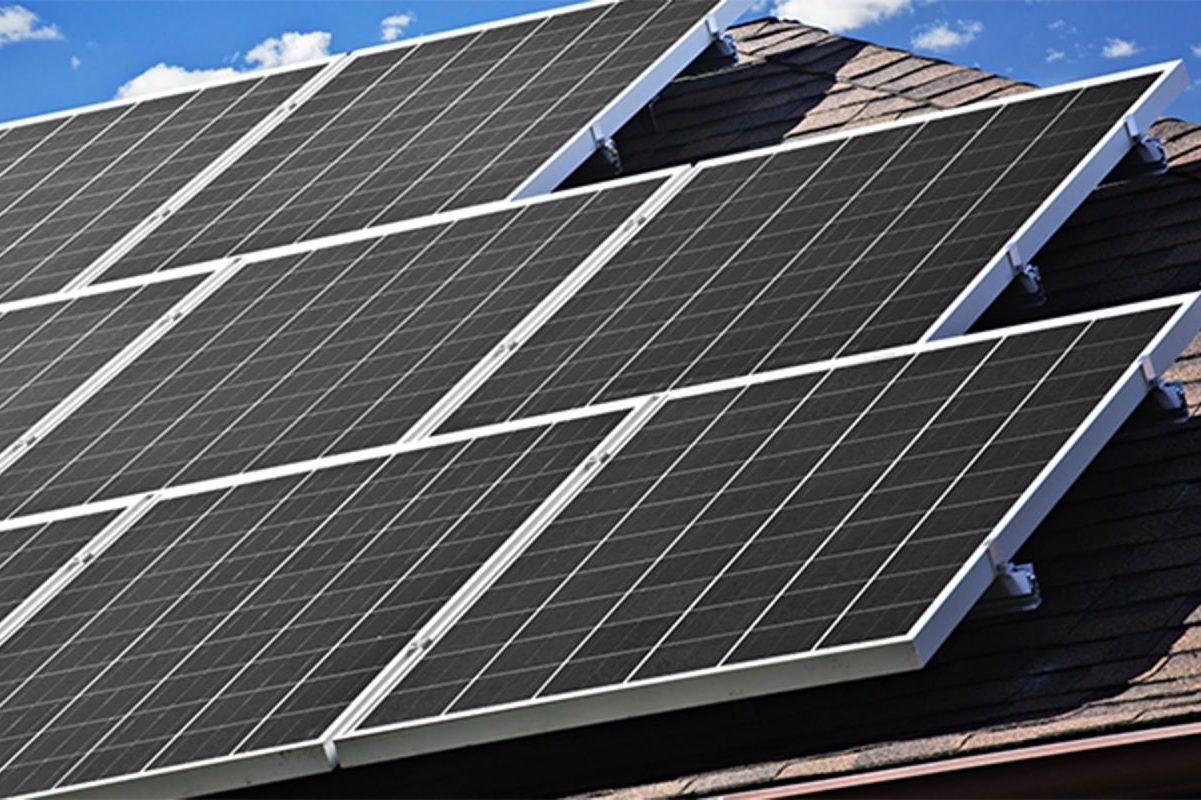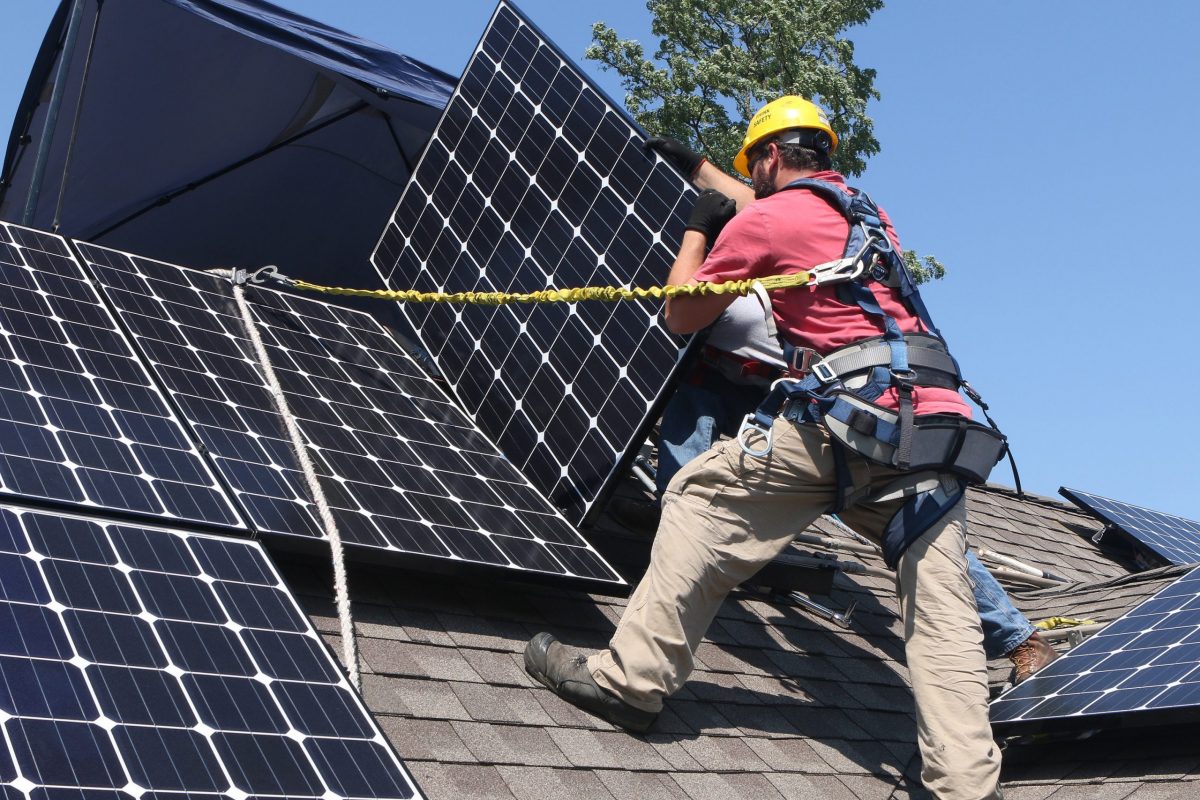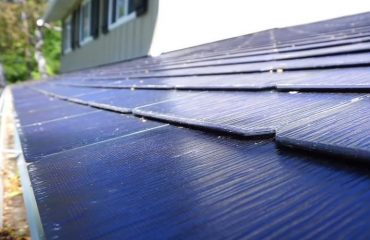Solar panels represent one of the most significant home investments you can make, delivering both environmental benefits and substantial financial returns over time. While the initial cost typically ranges from $15,000 to $25,000 for a residential system, modern solar installations can generate returns of 10% or higher annually through reduced electricity bills, tax incentives, and increased property value.
The return on investment (ROI) for solar panels has improved dramatically in recent years, thanks to falling equipment costs and more efficient technology. Most homeowners now recover their initial investment within 5-10 years, after which they enjoy essentially free electricity for the remainder of the system’s 25-30 year lifespan. In states with high electricity rates or generous solar incentives, the payback period can be even shorter.
Understanding solar ROI involves more than just calculating reduced energy bills. Federal tax credits currently offer 30% back on installation costs, while many states provide additional rebates and incentives. Property value typically increases by 4-6% with solar installation, providing immediate equity. Combined with protection against rising utility rates and potential income from selling excess power back to the grid, solar panels often outperform many traditional investments while providing environmental benefits and energy independence.
Understanding Solar Panel ROI Components
Initial Investment Costs
The initial investment for solar panels typically ranges from $15,000 to $25,000 for a standard residential system. This cost covers several essential components, including the solar panels themselves, inverters, mounting hardware, and wiring. The most significant portion of your investment will go toward the actual solar panel installation costs, which include professional labor and permits.
While these upfront costs might seem substantial, it’s important to note that prices have decreased significantly over the past decade, making solar more accessible than ever. Many homeowners can offset these initial expenses through various financial incentives, including the federal solar tax credit, which currently allows you to deduct 30% of your solar system costs from your federal taxes.
Additionally, many states offer their own incentives, rebates, and grants that can further reduce your out-of-pocket expenses. Financing options like solar loans, leases, and power purchase agreements (PPAs) can also help make the initial investment more manageable by spreading the costs over time. Remember that these upfront costs are a one-time investment that will generate returns through energy savings for decades to come.
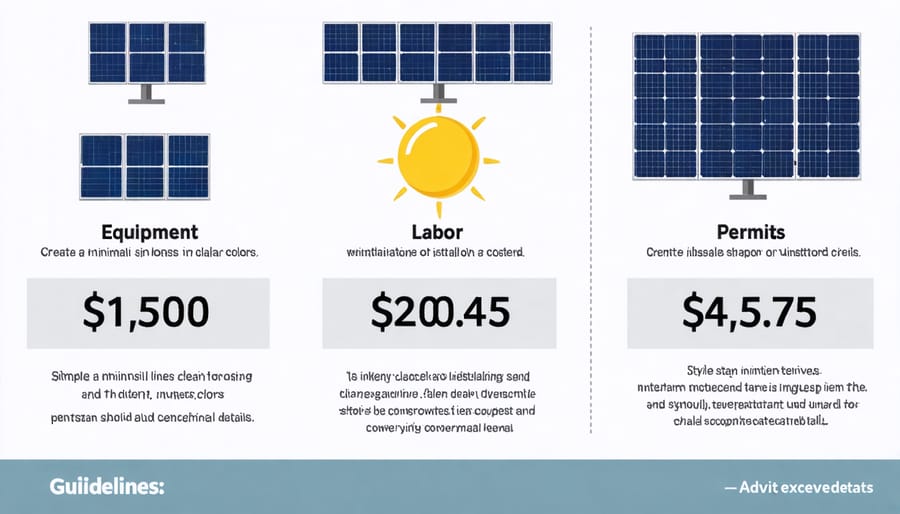
Energy Savings Over Time
Solar panels can significantly reduce your monthly electricity bills from day one. The average homeowner saves between $100 and $150 per month on utility costs after installing solar panels, though actual savings vary based on energy consumption patterns and local electricity rates.
These monthly savings add up quickly over time. In the first year alone, many households save between $1,200 and $1,800 on their electricity bills. As utility rates continue to rise (historically about 2.2% annually), your savings actually increase year after year because you’re avoiding these rate hikes on the energy your panels produce.
Consider this: if your monthly electric bill is currently $200, and solar panels offset 90% of your usage, you could save $180 monthly or $2,160 annually. Over 25 years (the typical lifespan of solar panels), your total savings could exceed $54,000, not accounting for electricity rate increases.
The savings are even more impressive in states with high electricity rates or abundant sunshine. Plus, many homeowners report that their solar panels continue performing efficiently well beyond the 25-year mark, extending their savings even further.
Available Incentives and Tax Benefits
Several financial incentives can significantly reduce your initial solar investment. The federal solar tax credit (ITC) currently offers a 30% deduction from your federal taxes on the total system cost. Many states provide additional solar tax incentives, rebates, and grants that can further lower your costs. Local utilities often offer performance-based incentives or net metering programs, paying you for excess energy production. Some municipalities provide property tax exemptions for solar installations, ensuring your property taxes won’t increase despite the added home value. These combined incentives can reduce your initial investment by 50% or more, significantly improving your solar ROI and shortening the payback period.
Calculating Your Solar Panel Payback Period
The Simple Payback Formula
Calculating the simple payback period for your solar panel investment is straightforward. Take your total installation costs (after tax incentives and rebates) and divide it by your annual energy savings. For example, if your solar system costs $15,000 after incentives and saves you $1,500 per year on electricity bills, your simple payback period would be 10 years (15,000 ÷ 1,500 = 10).
The formula looks like this:
Simple Payback Period = (Total System Cost – Incentives) ÷ Annual Energy Savings
Keep in mind that this basic calculation doesn’t account for factors like electricity rate increases, which typically rise 2-3% annually, or potential maintenance costs. It also doesn’t include additional benefits like increased home value or solar renewable energy credits (SRECs) that you might be eligible for in your state.
For most homeowners, the simple payback period falls between 5-10 years, though this can vary significantly based on your location, energy consumption patterns, and local utility rates. Consider this calculation as a starting point for understanding your solar investment’s timeline to break even.
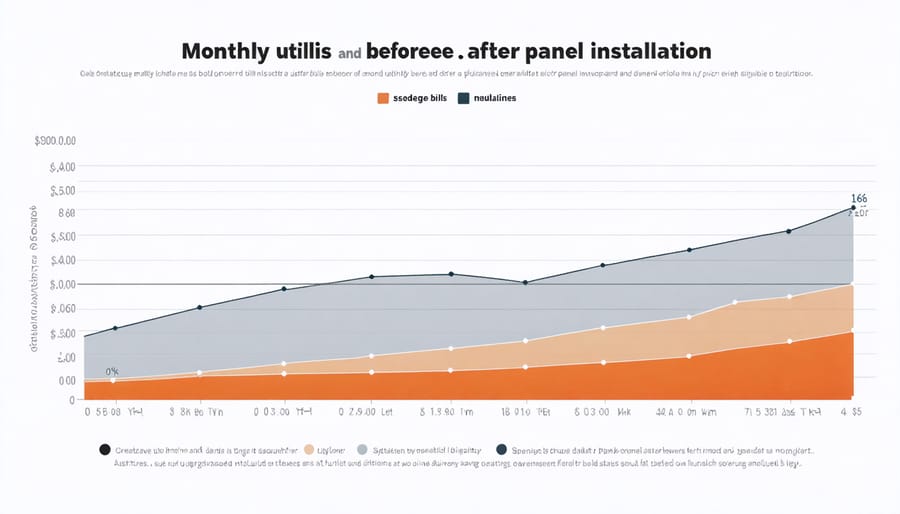
Real-World Factors Affecting Payback
Several real-world factors can significantly impact your solar panel payback period. Your geographic location plays a crucial role, as areas with more sunny days and higher electricity rates typically see faster returns. For example, homeowners in California or Arizona often experience shorter payback periods compared to those in cloudier regions.
Your household’s energy consumption patterns matter too. Families who use most of their electricity during daylight hours tend to maximize their solar investment, while those with heavy evening usage might see longer payback periods. The condition and orientation of your roof also affect performance – south-facing roofs with optimal angles typically generate more power.
Maintenance requirements can influence your returns as well. While solar panels generally need minimal upkeep, occasional cleaning and inspection costs should be factored in. Local weather conditions like heavy snowfall or frequent storms might necessitate more frequent maintenance.
Electricity rate trends in your area are another important consideration. If utility rates continue rising, your savings could increase faster than expected, shortening the payback period. Additionally, local incentives and regulations can change over time, potentially affecting your long-term returns.
Property value increases from solar installation, though harder to quantify, should also be considered as part of your return on investment. Many homebuyers are willing to pay a premium for houses with existing solar systems.
Long-Term Financial Benefits
Property Value Increase
Installing solar panels can significantly increase your home’s value, making it a smart investment beyond energy savings. Studies show that homes with solar installations typically sell for 4.1% more than comparable properties without solar systems. For an average-valued home of $400,000, this translates to a premium of approximately $16,400.
The value boost varies by location, local energy costs, and system size, but homebuyers increasingly prioritize energy-efficient features. In markets where solar awareness is high, such as California and Massachusetts, the premium can be even more substantial. Modern home buyers appreciate the reduced utility costs and environmental benefits that come with a pre-installed solar system.
What’s particularly appealing is that this property value increase typically occurs immediately after installation, unlike other home improvements that may take years to appreciate. The boost in property value can offset a significant portion of your initial solar investment, making it an attractive option for homeowners planning to sell in the future.
Protection Against Rising Energy Costs
One of the most compelling advantages of solar panels is their ability to shield you from rising energy costs. Historically, electricity rates have increased by approximately 2-3% annually, and this trend is expected to continue. By generating your own electricity, you’re effectively locking in your energy rates for the next 25-30 years – the typical lifespan of solar panels.
Think of solar panels as a hedge against future utility rate hikes. While your neighbors’ electricity bills continue to climb, your solar investment maintains steady, predictable energy costs. For example, if electricity rates rise by 3% annually, a $200 monthly electric bill would grow to about $320 in 15 years. With solar panels, you’d avoid most of these increases, potentially saving tens of thousands of dollars over your system’s lifetime.
Additionally, many utility companies offer net metering programs, allowing you to earn credits for excess energy your panels produce. This means you’re not just avoiding cost increases – you’re potentially earning value from your investment, especially during peak production months.
Additional Revenue Opportunities
Solar panels can generate more savings than just reducing your electricity bills. Through net metering programs, you can earn credits or even cash by selling excess power back to the grid. When your panels produce more electricity than you’re using, your utility meter actually runs backward, and you build up credits that offset your future energy costs.
Many states require utilities to offer net metering, making it a valuable additional revenue stream for solar panel owners. During peak sunlight hours, your system might generate more power than needed, allowing you to “bank” this excess production for nighttime use or cloudy days. Some utility companies even cut you a check for surplus energy at the end of the billing cycle.
To maximize these benefits, consider sizing your solar system slightly larger than your current needs. This approach ensures you can take full advantage of net metering while also accommodating potential increases in your future energy usage, such as adding an electric vehicle or home additions.
The combination of reduced utility bills and net metering credits can significantly improve your solar investment’s overall return, often shortening the payback period by several years.
Maximizing Your Solar Investment
System Size Optimization
When it comes to maximizing your solar investment, size truly matters. The ideal system size balances your energy needs with available roof space and budget constraints. To determine the optimal size, start by reviewing your past 12 months of electricity bills to understand your average consumption.
A common mistake is either oversizing or undersizing your system. An oversized system means paying for capacity you don’t need, while an undersized system won’t deliver the savings you’re expecting. Most homeowners find the sweet spot by aiming to offset 80-90% of their annual electricity usage, rather than trying to cover 100%.
Consider future changes in your energy consumption patterns. Planning to buy an electric vehicle or install a pool? You’ll want to factor in these additional power needs. Similarly, if you’re planning energy efficiency upgrades like better insulation or LED lighting, your future consumption might decrease.
Your local utility’s net metering policies also play a crucial role in sizing decisions. Some utilities offer less favorable rates for excess production, making it financially unwise to size your system larger than your actual needs.
Work with a qualified solar installer to analyze your specific situation. They can use sophisticated modeling tools to recommend the optimal system size based on your roof’s orientation, local weather patterns, and energy goals, ensuring you get the best possible return on your investment.
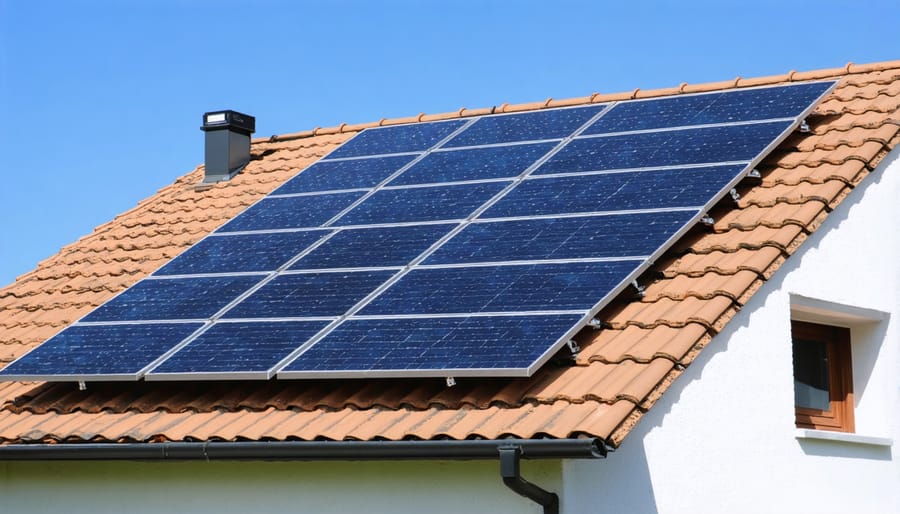
Maintenance and Performance Monitoring
Regular maintenance and monitoring are crucial for maximizing your solar panel investment. While solar systems are generally low-maintenance, following our solar panel installation guide and maintenance best practices can significantly boost their performance and longevity.
Keep your panels clean by gently washing them with water every few months, especially during dry seasons when dust and debris accumulate. Most systems come with monitoring apps that track daily energy production, helping you spot any efficiency drops early. Watch for unexpected decreases in energy output, which might indicate the need for professional cleaning or maintenance.
Annual professional inspections are recommended to ensure all components are functioning optimally. These checkups typically cost between $150-300 but help prevent costly repairs and maintain peak efficiency. During these inspections, technicians will verify electrical connections, check for any physical damage, and ensure your inverter is performing correctly.
Modern solar monitoring systems make it easy to track your ROI in real-time. Many apps show daily energy production, cost savings, and environmental impact. This data helps you verify that your system is delivering the expected returns and allows you to adjust your energy usage patterns for maximum savings.
Remember that well-maintained solar panels can perform at 95% or more of their rated capacity for 25+ years, ensuring optimal returns on your investment throughout their lifetime.
Solar panels represent a significant but worthwhile investment in your home’s future. As we’ve explored, the return on investment typically ranges from 5-10 years, with most homeowners seeing substantial savings over the system’s 25-30 year lifespan. The combination of reduced electricity bills, government incentives, and increased property value makes solar installation an attractive financial decision for many households.
Remember that your specific ROI depends on several key factors: local sunshine hours, electricity rates, installation costs, and available incentives. While the initial investment might seem substantial, the long-term benefits often far outweigh the costs. Many homeowners report monthly electricity savings of 70-100%, with some even generating excess power they can sell back to the grid.
Beyond the financial benefits, solar panels contribute to environmental sustainability and energy independence. As electricity rates continue to rise and technology improves, the case for solar power becomes even more compelling. With current federal tax credits and local incentives at their peak, now is an optimal time to consider making the switch to solar energy.
Take the next step by getting quotes from multiple certified installers in your area. They can provide detailed estimates based on your specific situation and help you understand exactly how much you could save. By investing in solar panels today, you’re not just reducing your carbon footprint – you’re making a smart financial decision that will benefit you for decades to come.

